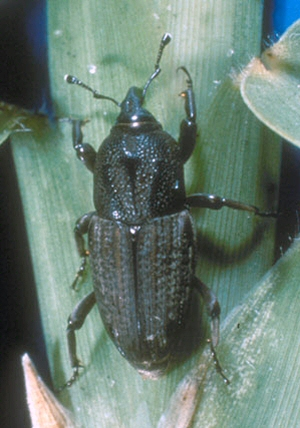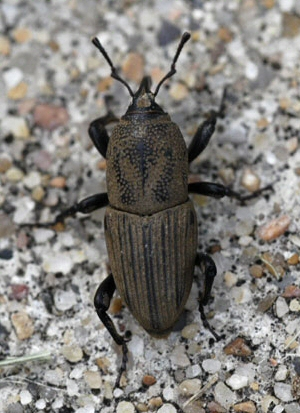Billbug
 Scientific Name
Scientific Name
Sphenophorus spp.
Host
The bluegrass billbug prefers to feed on Kentucky blue-grass, but will also feed on perennial ryegrass and fine-leaf fescue. Hunting billbugs infest zoysiagrass and hybrid bermudagrass, but will also feed on bahiagrass, centipedegrass, and St. Augustinegrass.
Symptoms
Adult billbugs chew holes in grass stems, usually just above the crown to create an egg-laying site. Larvae begin to tunnel within the stem upon hatching, then burrow into the crown, or exit and infest another stem. Older larvae will feed on the crown, and can kill plants. Injury symptoms are often mistaken for disease (spring dead spot) or winterkill.
Life Cycle

Description
Billbugs belong to a group of beetles called weevils or snout beetles. Several species of billbugs attack turf. In Oklahoma, the bluegrass (Sphenophorus parvulus) and hunting (S. venatus vestitus) billbugs are most damaging to turf. Adult billbugs are gray, black or brown, and measure 3/8 inches long. They have a beak-like snout; and the snout, head, and thorax are about as long as the wing covers. Billbug grubs are white, legless with a somewhat curved body and measure about 3/8 inches long when fully grown. They have a brown head capsule and can usually be found in grass stems or thatch.
Control
Please contact your local county extension office for current information.

